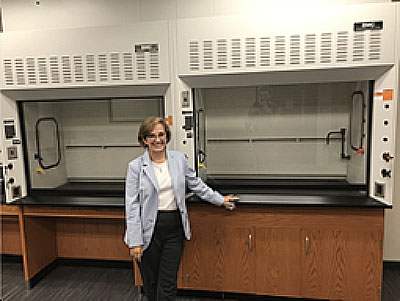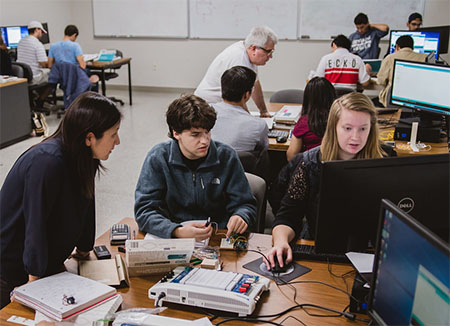Biomedical engineers are currently in high demand in an ever-evolving world of technology, and Stevenson University now offers a major dedicated to making sure students are prepared to pursue a job in this field.

The new major is currently in its first semester of existence, but interest from students is far ahead of expectations, according to Dr. Meredith Durmowicz, dean of the School of Sciences, who said, “We have six who came in this fall, which is actually a year earlier than we had anticipated opening the program and enrolling students.”
Durmowicz described the biomedical engineering major as “an interdisciplinary program that combines the basic sciences (biology, chemistry, physics) and a lot of math with engineering… all with a goal of solving problems and challenges related to human health and medicine.” Some of the problems students may solve can range from designing prosthetics and medical gear on a micro and macro level to medical processes and logistics used in hospitals and clinics.
The Bureau of Labor Statistics included information on biomedical engineers in the 2018 edition of the Occupational Outlook Handbook, which states that “employment of Biomedical Engineers is projected to grow 4 percent from 2018 to 2028,” which they claim is due to increasing abilities with technology such as 3 dimensional printing and smartphones. The job market for biomedical engineers is very broad as well, including jobs such as “rehabilitation engineering, medical and bioinformatics, biomaterials, and tissue engineering,” according to the Stevenson University website.
According to Durmowicz, one of the features of this major is that is has “at least one design-based course every year of the program that will ask students to design something that will solve a biomedical problem or challenge, while keeping the needs of the client, population, economic constraints, and ethical considerations in mind.” Durmowicz said that this yearly challenge will bring together all of a student’s science and technical knowledge to complete the task.
Durmowicz also explained that “leading up to the senior year design capstone course, in their junior year students will do an immersive clinical experience,” in which, she said, they will “shadow clinicians and watch the logistics of how things work, the kinds of things clinicians are doing, what they are treating patients for, how they are treating them, etc.” Durmowicz added that the reason juniors do this is so “they can identify a problem or a challenge that they can use as the basis for their senior capstone.”
Stevenson gained approval from the Maryland Higher Education Commission to add this program in January of 2019, which may have been a reaction to the favorable long-term occupational projections for biomedical engineers in the state of Maryland estimated at a 4.5 percent growth in employment over 10 years by the Bureau of Labor Statistics.
Beyond the Bureau projections, Durmowicz said the biomedical engineering program “provides a really good foundation for any sort of scientific research, graduate health professions, medical school, dental school and many other things as well. Students in this program have a lot of opportunities in many different fields.”
The biomedical engineering field is a major that includes teamwork, problem solving, practical projects through the yearly design based courses, experience in the workplace, and a senior capstone project that will serve as a launchpad into the career world of biomedical engineering or other science, math, or engineering fields.


























































